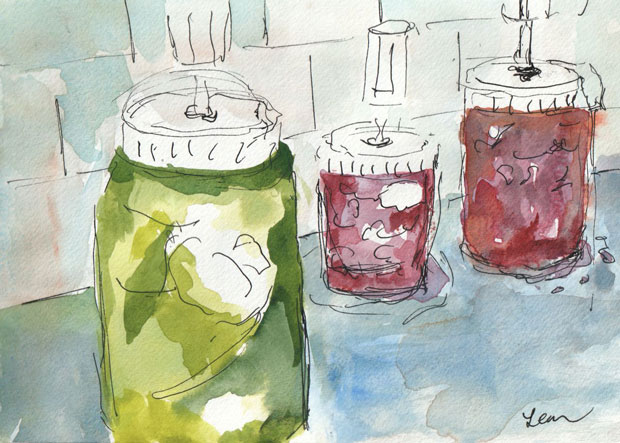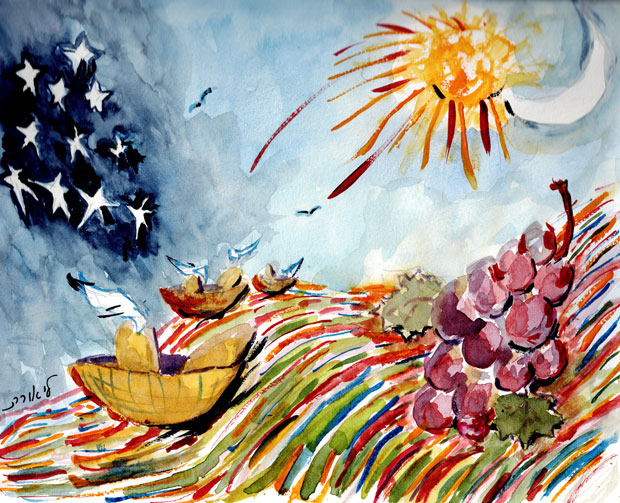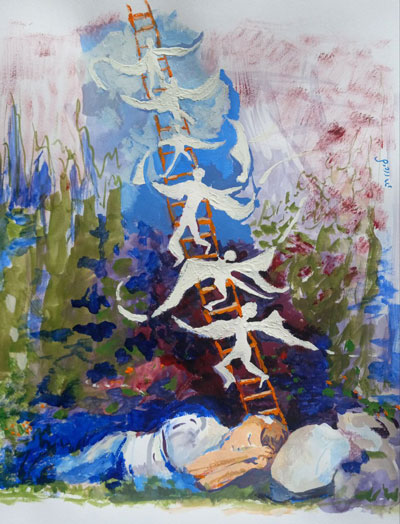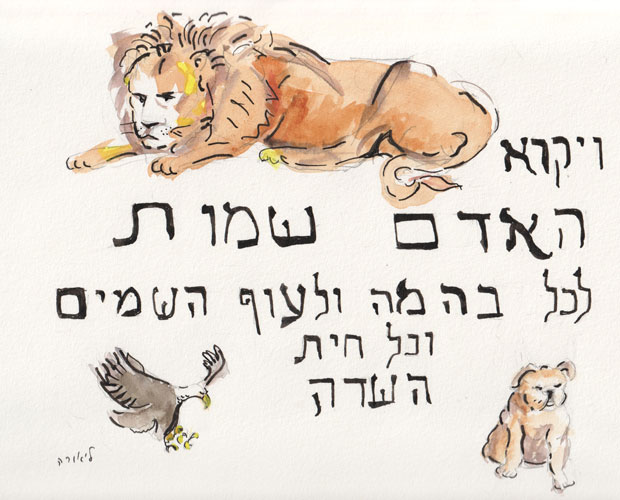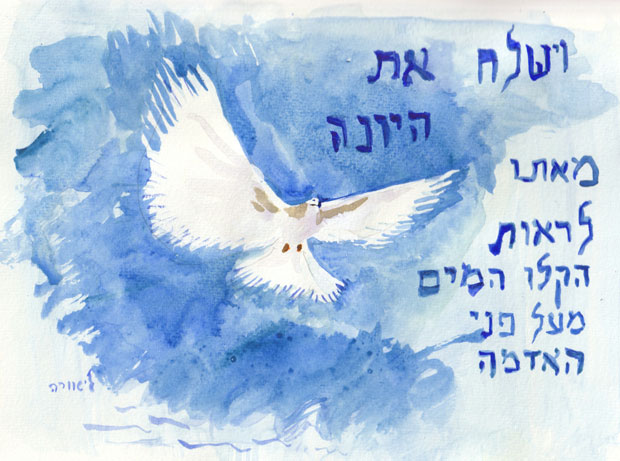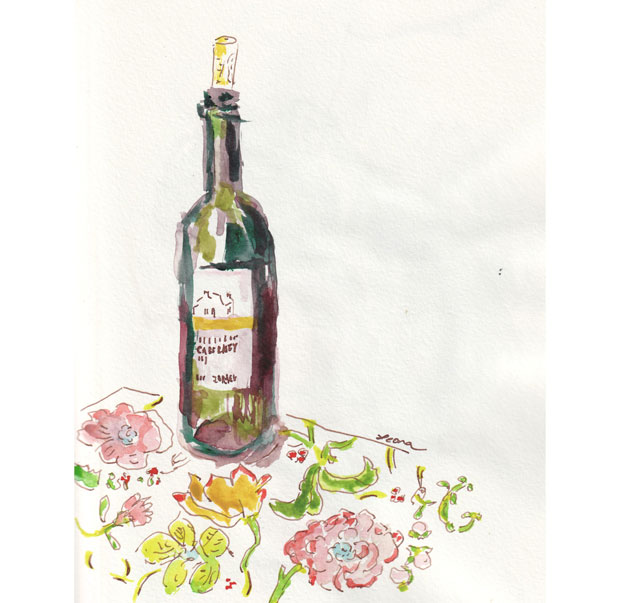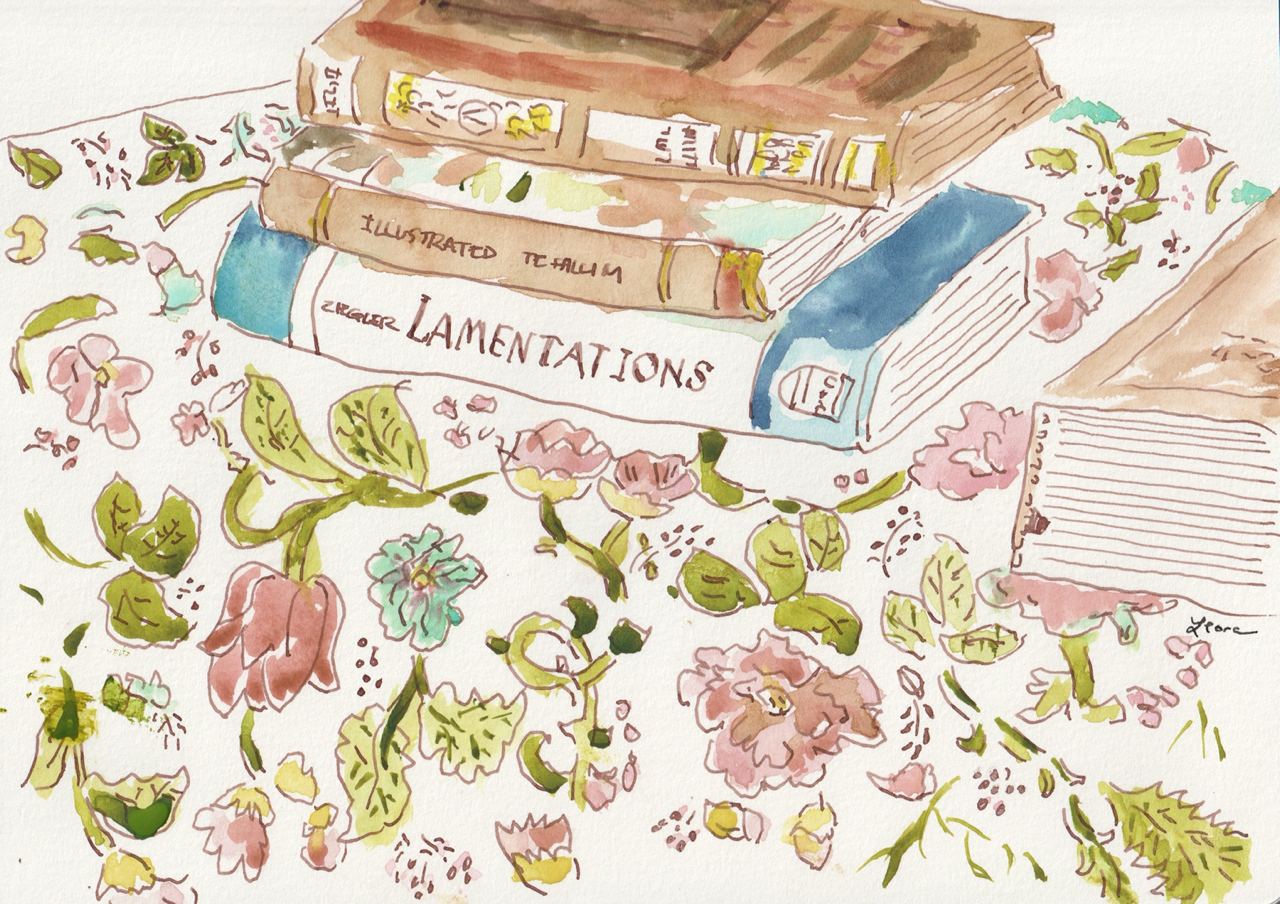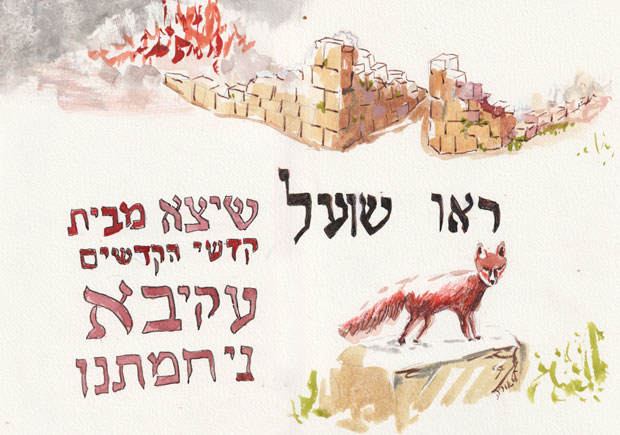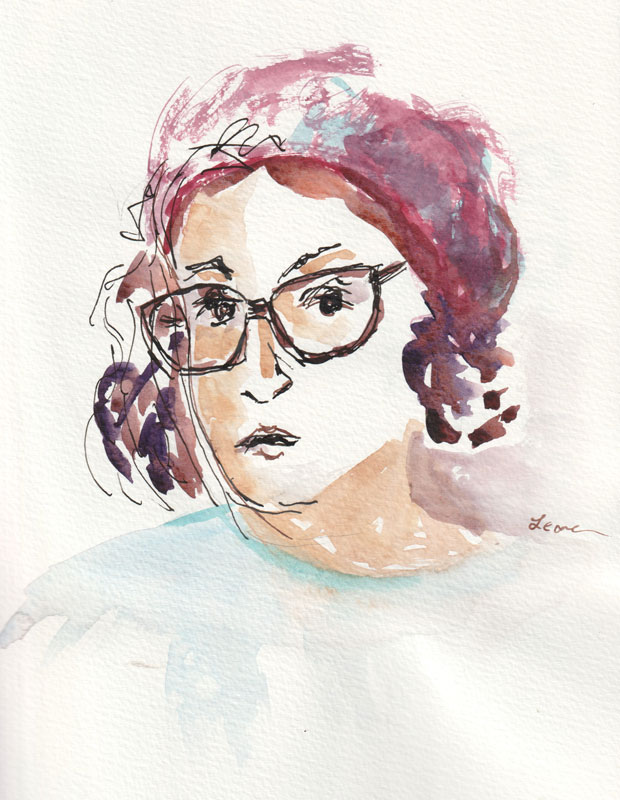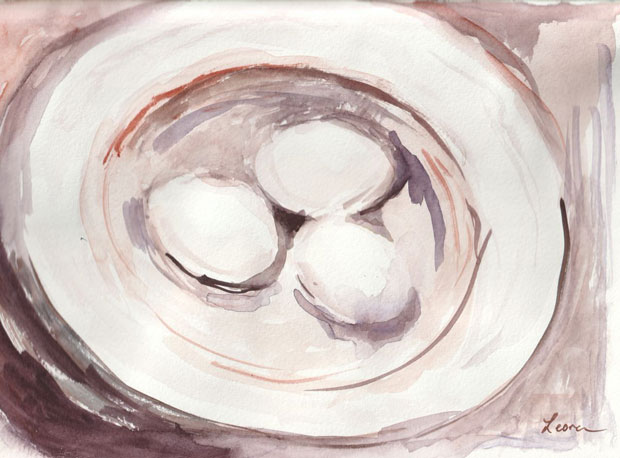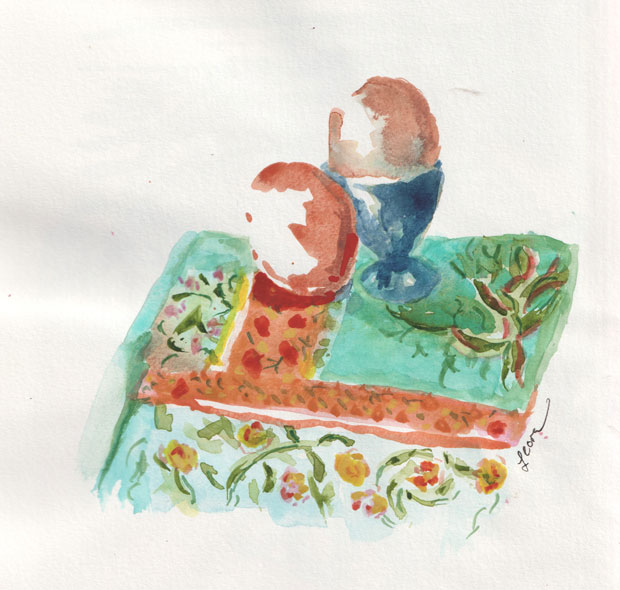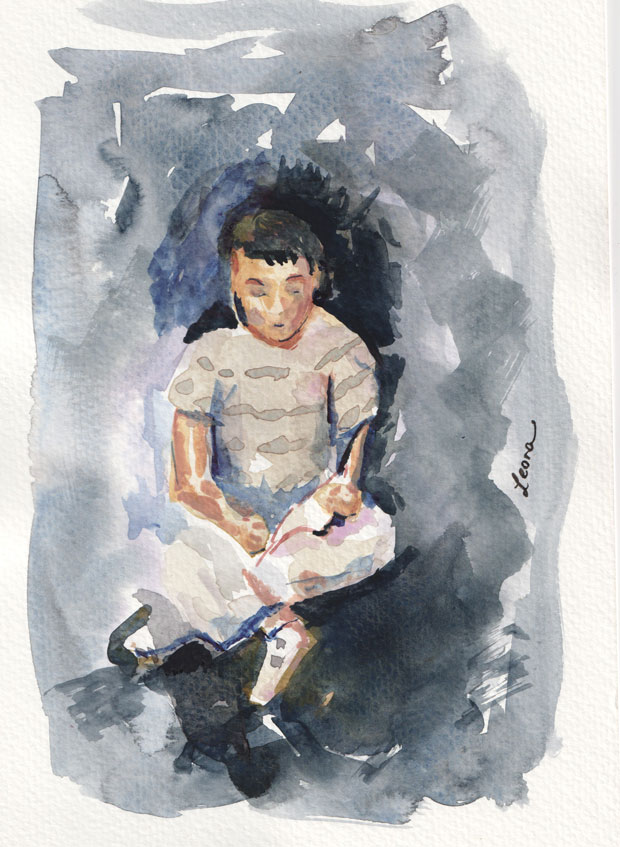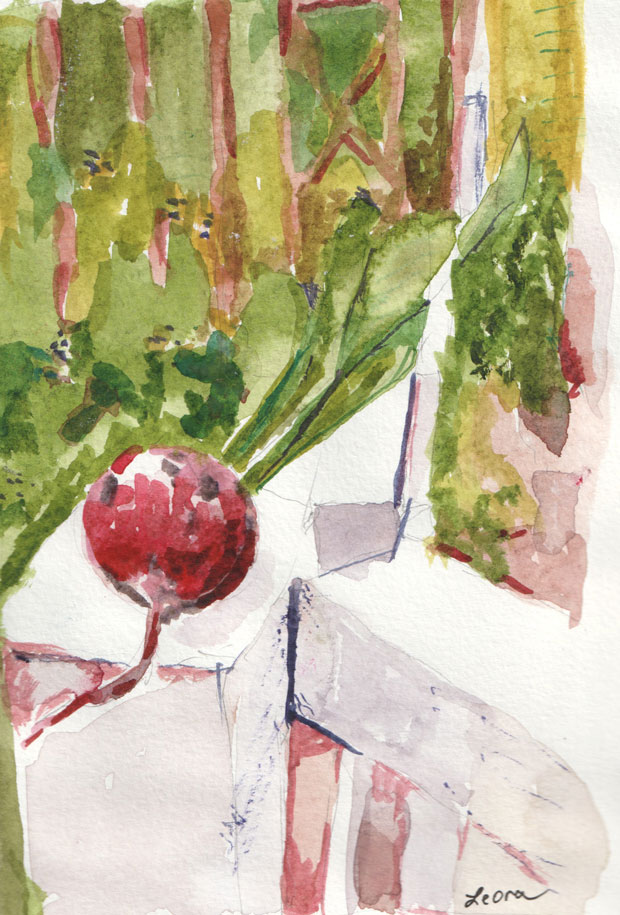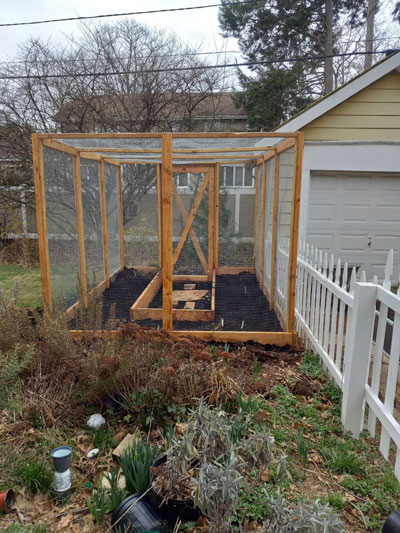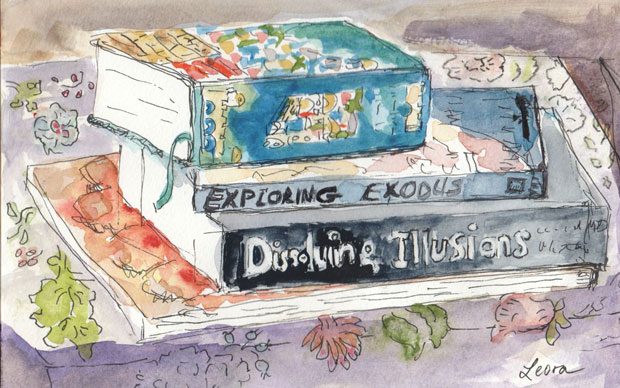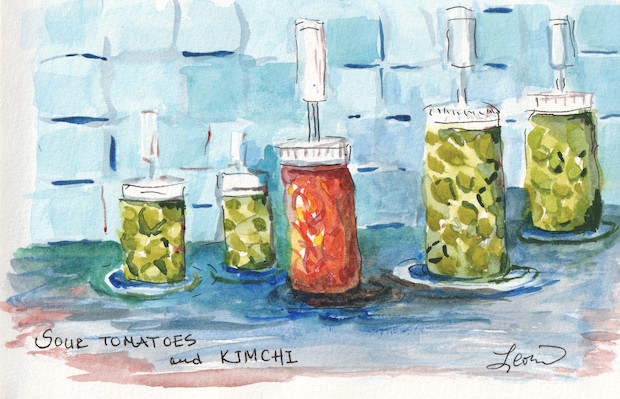
Sauerkraut
1 head of cabbage, red or green
Save outer leaves. You can also use a horseradish leaf for top layer.
1 tsp. Real Salt (or other sea salt, Do Not Use Table Salt) — in my opinion, just add a spoonful of salt to each bunch of cut up cabbage — no need to measure exactly.
1 mason jar (32 oz. large wide mouth mason jar)
1 glass weight *
Fermentation lid for the top **
Take off and save outer leaves of the cabbage. Cut cabbage into small pieces. Place cut pieces in large ceramic bowl. Sprinkle salt as you cut. Remove from jar and place in large ceramic bowl. Massage the cabbage with a masher or with your hands. Leave it under a weight like a large water bottle and plastic plate (if you have glass or ceramic the diameter of your bowl, better) for a few hours. Object is to get the water out of the cabbage.
After some hours (can be overnight), massage the cabbage once again. Pour liquid from the cabbage into the mason jar. If you do not have a cup of water (1/4 full), add more water. Pour the water/brine into another container. Add the chopped cabbage to the mason jar. Cabbage will shrink, so put more outer leaves if it is not filling the jar. Add the optional horseradish leaf. Add the weight. Add the brine so liquid covers the cabbage. Add top fermentation lid. Place in a cool spot out of direct light. Wait as long as you can. Check every few days. Enjoy.
Sour Tomatoes
Unripened green tomatoes
Real Salt (or other sea salt)
Filtered or bottled spring water
Garlic cloves, cut out from peel (optional)
Pickling spices (optional — dill, peppercorns, mustard seed)
Horseradish leaf (optional)
1 mason jar (16 or 32 oz. large wide mouth mason jar, depending on how many green tomatoes)
1 glass weight *
Fermentation lid for the top **
Fill a mason jar with unripe green tomatoes. Add garlic and spices. Add a few teaspoons of sea salt. Add water. If you have a horseradish leaf, place it on the top. The horseradish leaf holds the rest of the contents in place. Put the weight on top. Put on fermentation lid. In a week or less, you will see the fermentation juices bubbling up to the top. The tomatoes are often ready in about a week or two. When they turn an olive, cloudy green instead of a brighter green, you are on way to owning delicious sour tomatoes.
Kimchi
Real Salt (or other sea salt)
Filtered or bottled spring water
1 daikon radish
A few long red radishes (I bought some at the Jeff’s Organic stand at the Highland Park Farmers Market)
1 to 2 carrots
1 – 2 cloves of garlic
1 – 4 hot red peppery chili (or more, depending on how hot you like your kimchi)
3 Tablespoons grated or diced small ginger root
1 cabbage or horseradish leaf (optional)
1. Mix a brine of about 4 cups of water and 2 tablespoons of sea salt. Stir well to dissolve salt.
2. Coarsely chop cabbage, slice carrots into small sticks, slice radishes and daikon into small coins, and let the vegetables soak in the brine covered with a plate and a large bottle of water (or any heavy weight) for a few hours or overnight.
3. Prepare spices: chopped garlic, chili peppers with seeds removed, chopped ginger.
4. Drain off liquid from soaking vegetables into another bowl. Mix the chili, ginger, and garlic into the vegetables. Pack the mixed vegetables into a mason jar, pressing down until the brine rises. Add the cabbage leaf if you have and then a glass weight. Cover with the fermenting lid. Check every few days. Enjoy.
Adapted from Wild Fermentation by Sandor Ellix Katz
About Fermenting in General
For healing benefits, consume some of the juice of your ferments each day.
Once you have the basics down for sauerkraut or kimchi, you can try experimental combinations, such as cabbage + carrots + turnip + fresh ginger root.
Of the three recipes posted here, sour tomatoes is the easiest. You just add green tomatoes to a brine, with optional garlic or spices. But not everyone has an abundance of green tomatoes in the fall.
———-
* Glass weights: Type “fermentation glass weights” into a search engine or into Amazon, and you will find plenty. Many are less than $20. I like the ones with the little knobs, but the ones without have the advantage of taking up less space.
** Fermentation lids: look at Jillmo Fermentation kit, available on Amazon. Eden Farmhouse Essentials also makes these lids. You won’t have to burp your ferments every few days if you use these lids. Put them on and just watch as the ferment bubbles up in a few days.
